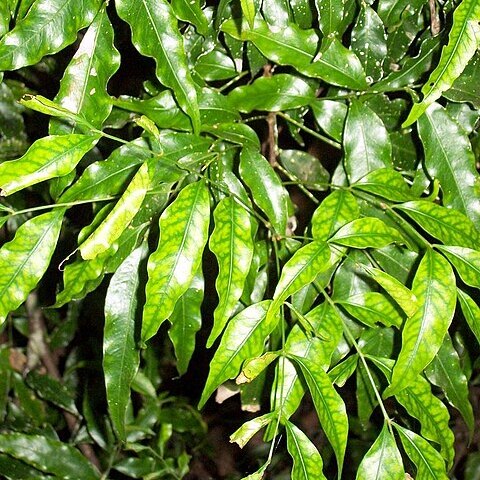Shrubs or trees, usually monoecious. Branchlets lenticellate. Leaves paripinnate; leaflets opposite or alternate, usually pellucid-dotted, upper surface usually with appressed lepidote glands; petiolulate. Inflorescence axillary or ramiflorous, solitary or clustered, raceme-like or panicle-like; cymules stalked. Flowers small, regular. Calyx deeply 5-lobed, the lobes 2-seriate, or sepals free, imbricate, elliptic or obovate, concave, petaloid, the outer pair smaller, gland-dotted, ciliolate. Petals 5, obovate or elliptic, membranous; scales absent. Disc regular, glabrous. Stamens 6–8; filaments usually hairy. Ovary 3-locular; ovule 1 per locule; style slender, persistent. Fruit globose or obovoid, drying blackish, 3-locular, loculicidally dehiscent; valves drying ± woody, glabrous. Seed ellipsoidal, slightly compressed; aril thinly fleshy, oily, oblique, ventrally attached to seed and usually covering it.

